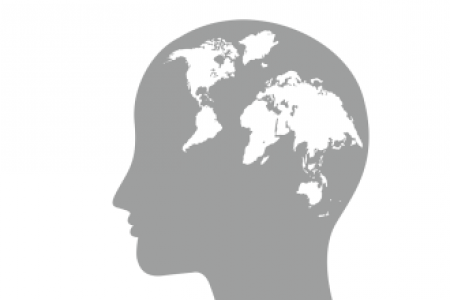The nexus between artificial intelligence and neuroscience: The Connectome Project
Neuroscience (NS) and Artificial Intelligence (AI) have historically worked in synergy with one inspiring advancements in the other. In this post, I will briefly walk you through the grounds of this symbiosis using the example of the Connectome Project.
A brief overview of the synergy
Before we delve into how the two fields currently complement each other, it might be useful to understand the long history of collaboration between them. Though there is disagreement on the definition of intelligence, the term is predominantly associated with one class of mammals… you've guessed it. It is therefore no surprise that AI has traditionally sought to emulate the brains of our species.
Neuroscience seeks to uncover the mechanisms underlying our cognition and ultimately our consciousness, using techniques such as functional magnetic resonance imaging (fMRI) and electroencephalography (EEG). AI, a subfield of computer science, entered the game through continuous attempts at replicating these mechanisms, and it provided tools for analysing brain-imaging data. This naturally gave rise to a relationship between the two fields.
Already in the 1950s, there was an attempt to model the information-processing mechanisms of neurons, which led to the development of a perceptron. A perceptron was essentially viewed as the artificial equivalent of a biological neuron. From there, an artificial brain-inspired network grew into what has become our everyday reality. Next time you open ChatGPT to see if you were right in an argument, you can thank deep learning for simulating the recurrent hierarchical architecture of your brain’s neural networks. The multi-layered structure of interconnected nodes, modelled after biological neural pathways, allows ChatGPT to learn exceptionally quickly… so that it can politely inform you that you were likely wrong.
One could go on about the remarkable achievements of NS-fuelled AI, but it is important to pause and ponder the reductionist approach of these impressive emulations. Each neuron in the deep neural network is a so-called point neuron. This type of design ignores nonlinear dendritic computation and thus fails to capture the inherent complexity of the neuronal basis it aims to replicate.
Despite this lack of added complexity, AI has been extraordinarily productive. However, the advantage of biologically plausible AI, compared to the prevailing reductionist approach, also lies in its usefulness for understanding information processing in the human brain. Therefore, the more we understand about the brain’s neural connections, the more we can potentially mirror with AI. This brings us to the topic of one of the most ambitious scientific projects of our time.
The more we know: The Connectome
The Human Connectome Project (HCP) is a collaborative effort to map the entirety of the human brain connections in healthy adults. In the past, research into connectomes in humans wasn’t feasible, as scientists would have had to inject a fluorescent tracer into multiple points in the brain. Given the invasive nature of the procedure, this was limited to animal research. However, with advances in MRI, estimates can now be carried out in humans non-invasively. This technique, called diffusion MRI-based fibre tracking, takes advantage of magnetic fields to track signals from water molecules that diffuse along nerve fibres. A computer algorithm is then able to use the data gathered from the water signals to estimate the paths of the nerve fibres throughout the whole brain. The vast body of data collected from the MRI scans can be analysed and interpreted using deep learning algorithms, which renders projects such as HCP feasible.
Mapping the Connectome may help with paving the way for advances in both diagnosis and treatment of neurological and psychological disorders. In terms of clinical applications, it could help identify neurological diseases such as Alzheimer's and Parkinson's, but also disorders of consciousness such as schizophrenia. The intersection of AI and NS has the potential for developing new diagnostic tools that might add some objectivity to the current DSM approach. The traditionally categorical approach of DSM-5 could be complemented by comprehensive sets of neuroimaging data that, if supplemented by insight from newly mapped connections, could guide diagnosis. However, the potential of the cooperation between neuroscience and AI goes beyond the amelioration of diagnosis. The possibilities for improving general healthcare, understanding cognition, and pushing the boundaries of scientific knowledge seem endless.
Conclusion
The two-way relationship between NS and AI has historically been a fruitful one. NS has inspired many of the breakthroughs in the field of AI, which has in turn provided indispensable tools for recognizing patterns in massive sets of neuroimaging data. In a nutshell, the more mysteries of the brain are unravelled, the more can be emulated by AI systems; and the more advanced these technologies become, the more can be learned from the data. If we are to truly foster valuable collaboration between and interdisciplinary exploration of these two fields, we may look forward to a future where they walk hand in hand, unlocking the full potential of the human brain and mind.





